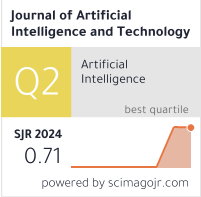Intelligent Network Slicing in V2X Networks – A Comprehensive Review
DOI:
https://doi.org/10.37965/jait.2023.0208Keywords:
artificial intelligence, deep learning, Internet of Things, machine learning, software-defined network, vehicle-to-everything networksAbstract
The rise of the Internet of Things and autonomous systems has made connecting vehicles more critical. Connected autonomous vehicles can create diverse communication networks that can improve the environment and offer contemporary applications. With the advent of Fifth Generation (5G) networks, vehicle-to-everything (V2X) networks are expected to be highly intelligent, reside on superfast, reliable, and low-latency connections. Network slicing, machine learning (ML), and deep learning (DL) are related to network automation and optimization in V2X communication. ML/DL with network slicing aims to optimize the performance, reliability of the V2X networks, personalized services, costs, and scalability, and thus, it enhances the overall driving experience. These advantages can ultimately lead to a safer and more efficient transportation system. However, existing long-term evolution systems and enabling 5G technologies cannot meet such dynamic requirements without adding higher complexity levels. ML algorithms mitigate complexity levels, which can be highly instrumental in such vehicular communication systems. This study aims to review V2X slicing based on a proposed taxonomy that describes the enablers of slicing, a different configuration of slicing, the requirements of slicing, and the ML algorithm used to control and manage to slice. This study also reviews various research works established in network slicing through ML algorithms to enable V2X communication use cases, focusing on V2X network slicing and considering efficient control and management. The enabler technologies are considered in light of the network requirements, particular configurations, and the underlying methods and algorithms, with a review of some critical challenges and possible solutions available. The paper concludes with a future roadmap by discussing some open research issues and future directions.
Metrics
Published
How to Cite
Issue
Section
License
Copyright (c) 2023 Authors

This work is licensed under a Creative Commons Attribution 4.0 International License.
Funding data
-
National Key Research and Development Program of China
Grant numbers 2020YFB1807900





